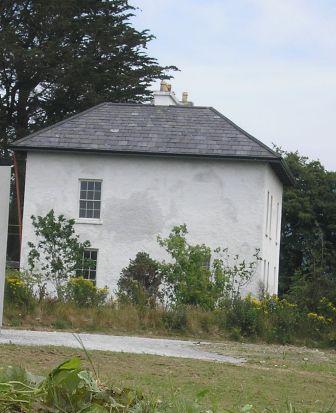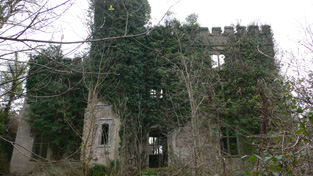Glencollins Lower
Houses within 15km of this house
Displaying 20 houses.
Houses within 15km of Glencollins Lower
Displaying 20 houses.
| House name | Description | |
|---|---|---|
| Coom Wood Cottage | Timothy O’Sullivan was leasing Coom from Lord Kenmare’s estate at the time of Griffith’s Valuation when it was valued at £5 15s. Bary states that the origina property is no longer extant though a house is present at the site. | |
| Freemount Lodge | Daniel Moynihan was leasing Freemount from the Earl of Kenmare’s estate at the time of Griffith’s Valuation, when it was valued at £5. Bary states that the house had been in the Moynihan family since the 18th century and that it later passed to the Mahony family. It has since been demolished and a modern house built there. | |
| Cloonts | Henry Moriarty Cronin was leasing this property from the Kenmare estate at the time of Griffith's Valuation, when it was valued at £5 10s. Bary states that it was later occupied by Daniel O'Halloran but is no longer extant. | |
| Knocknaseed | Christiana Duggan (nee Cronin) was leasing Knocknaseed House from the Kenmare Estate at the time of Griffith's Valuation, when it was valued at £16. Bary states that the current house was built around 1839, replacing an older house on the site. It is still extant. | |
| Shinnagh House | Daniel Coltsman Cronin was leasing Shinnagh House from the Kenmare Estate at the time of Griffith's Valuation when it was valued at £14 8s. In 1837, Lewis refers to "Shannagh House" as the seat of H.O'Sullivan. Bary indicates that it was occupied by the Sullivan family for much of the nineteenth and into the twentieth centuries. It later passed by inheritence to the O'Keeffe family. | |
| Kilmurray House | Anthony Raymond was leasing Kilmurray House to Catherine McIntosh at the time of Griffith's Valuaton, when it was valued at £18 5s. The Ordnance Survey Name Books describe it as " a handsome house, 3 storeys high" in the 1830s. Bary writes Kilmurray was said to have been built by Archibald McIntosh (Cantoss) around 1839 although it appears earlier than that. By 1870, George Raymond, QC, who resided in Dublin, used Kilmurray as a summer home where his relatives, the McIntosh family resided. It is still extant and in 2008, was offered for sale. |

|
| Mount Eagle Lodge | Major Fairfield was the owner of Mount Eagle at the time of Griffith's Valuation when it was valued at £10 15s. Bary writes that it was built by him in 1830 and Lewis recorded it as his residence in 1837.The Ordnance Survey Name Books describe it as "a handsome cottage". It was most frequently used as a hunting lodge. Later in the nineteenth century it was the property of Colonel Drummond and resided in by his agent, Mr. Black. In 1906 it was owned by Charles Drummond and valued at £12. The property was eventually sold to the Forestry service in the mid-twentieth century when the house was demolished. | |
| Rath More House | At the time of Griffith's Valuation, Rev. Edward Walsh was leasing this property from Daniel Coltsman [Cronin], when it was valued at £17. In 1837 Lewis notes that Rathmore House was the property of D. Cronin but "now occupied by a society of monks". These were Cistercian monks, afterwards located at Mount Mellerey in county Waterford. The Cronins had lived at Rathmore until the early years of the nineteenth century before leasing it to the Order. After the monks departed it was used as the local presbytery and part of it is still extant. Denis Glissane was leasing a house in the same location from the Cronin estate, valued at £8. | |
| Deane's Lodge | In 1906 Col. Charles Deane owned a property at Knockawinna, barony of Trughancmy, valued at £6 5s. Alexander Deane was the lessor of this townland at the time of Griffith's Valuation. | |
| Knockagallane | This house valued at £10 was in the occupation of Eugene McCarthy at the time of Griffith's Valuation and held from - Morrison. | |
| Wood View | A house valued at £10+ in the mid 19th century, occupied by Denis McCartie who held it from John McCarthy. The residence of J. McCartie in 1837. In the Irish Tourist Association Survey of the 1940s it is referred to as the residence of Mr. Daly and "formerly the home of the McCarthy-O'Leary family, connected with Daniel O'Connell". The original house is no longer extant. | |
| Kingwilliamstown House | At the time of Griffith's Valuation this house was occupied by Martin Roche who held it from the Commissioners of Woods and Forests. It was valued at £14. It later became the home of Nicholas Dunscombe. A house remains at this site though modern housing development has taken place nearby. | |
| Ardnageeha | Hajba writes that this house was built by Daniel McCartie, a Commissioner of Tithes for the parishes of Cullen and Drishane. The house valued at £12.10 shillings was occupied by his wife Anne McCartie at the time of Griffith's Valuation. The property was held from the Earl of Egmont. Daniel's only child Mary married John Maurice O'Connell, a grandson of Daniel O'Connell. The O'Connell lived at Ardnageeha until 1890 when they moved to Derragh House. The house is still extant though possibly not occupied. |

|
| Derragh | This house was the home of Denis McCartie in the first half of the 19th century. In the occupation of the Poor Law Guardians at the time of Griffith's Valuation when it was valued at £12+ and held from his widow Ellen McCartie. Later occupied by John and Mary O'Connell formerly of Ardnageeha. The house was demolished in the 1950s. | |
| Glantanemore | A house valued at £11 in Glantanemore was occupied by Robert McCartie in the early 1850s. He also held 309 acres in the townland from Charles D. Purcell and Captain Wood. This may be the house referred to by Hajba as Glantane House, Cullen, home of the McSweeneys in the 20th century. | |
| Church Hill | Occupied by Charles McCarthy in 1814 and by Daniel McCartie in 1837. Mary McCartie occupied the house in the early 1850s holding it from Anne McCartie. It was then valued at £5.10 shillings. Hajba writes that the last McCartie to live at Church Hill was Richard. The property was sold to the Shine family in the late 19th century and there are only some ruined remains of the house. | |
| Duarrigle Castle | Originally a tower house of the O'Keeffe family, leased by Henry Wrixon to Thomas Holmes Justice who built a 'mock' castle in the early 19th century. Inherited by his son Thomas Holmes Justice medical doctor of Mallow. Sold in the Encumbered Estates' Court in 1851 and bought by Henry Chinnery Justice, who left it to his sister Mrs Wallis when he died in 1859. The castle is now a ruin but the gatelodge is occupied. |

|
| Mount Justice | This was a home of the Justice family from at least the late 18th century. By the time of Griffith's Valuation the house was valued at £3.15 shillings and was occupied by John Bolton Justice who held it from Charles D. Purcell. Hajba writes that members of the Justice family continued to occupy the house until the 1920s. It is now demolished. | |
| Rathroe | Hajba records a lease of Rathroe House from Sir Robert Deane to Denis McCarthy dated 1779. In 1837 another Denis McCarthy was occupying the house and he was also resident in the early 1850s when the house was held from the Reverend Nicholas Chinnery. The buildings were valued at £26.15 shillings. Hajba writes that the McCarthys continued to live in the house until it was sold in the 1930s to Con Meaney TD. The house is no longer extant. | |
| Rathduane | The home of Owen McCarthy in 1814, of J.E. McCarty [Jeremiah Eugene] in 1837 and of Eugene McCarthy at the time of Griffith's Valuation when the buildings were valued at £20 and held from Sir Broderick Chinnery. Still a McCarthy home in the 1870s. |

